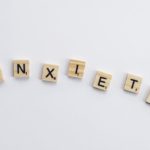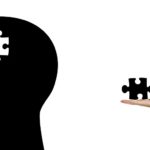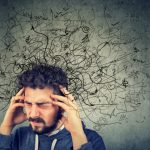Anxiety affects millions of Americans across the board, indigent and affluent alike. It does not discern between race, color, or creed. In its simplest form, anxiety is best described as a pervasive sense of worry, the severity of which will determine the impact the disorder has on your day-to-day functionality. Mild to moderate anxiety may be common in a go-getter-style society where everyone is jockeying for status, socially and professionally. In an increasingly cutthroat world where demand often seems to exceed supply, we are all compelled to compete and that in itself is a stressful undertaking.

Source: CCBY SA Max Roser – Our World in Data
There is no doubt about it: burgeoning population numbers are placing tremendous stress on the availability of resources across the board. Barely a hundred years ago, in 1928 the population of the Earth stood at 2 billion people. Fast forward to 2019, that population has swollen to more than 7.7 billion people. The size of the planet has not increased – what has happened is that existing resources are being developed like never before, resulting in tremendous stress all around.
Those who dismiss the linkage between population growth and increasing anxiety levels need only consider the case of a science experiment where a growing number of electrons is added to a container, with the resultant friction, collisions, and heat that ensue. In much the same way, too many people competing for the same things are the bedrock of a stressor. Anxiety is a natural byproduct of stress, fear, dread, and worry. Severe anxiety has the capacity to hamstring all aspects of your daily life, serving as one of the most common mental illnesses around the world.
Anxiety Disorders: An In-Depth Understanding of a Crippling Condition
The negative expectations surrounding anxiety disorders manifest physically and mentally. The cognitive ‘emotional’ state created by anxiety elicits fear and dread, which in turn results in physical sensations. These include butterflies in the stomach, an inability to concentrate, pacing back and forth, perspiration, cramping, and even digestive issues. These physical manifestations of the mental component of anxiety disorders are real and crippling. The disorder is the worrisome component.
Anxiety is often associated with major depressive disorder, bipolar disorder, and numerous personality and mood disorders. Treatment for anxiety is absolutely necessary for people who suffer from serious anxiety disorders. Without effective treatments such as medication, therapy, or FDA approved TMS for drug and therapy resistant anxiety disorders, life can be difficult.
The root causes of anxiety are multifold and include a combination of biology, trauma, and the journey through life itself. As a society, we cannot escape anxiety – we have to live with it, control it, and prevent it from becoming a disorder. Anxiety, at moderate levels, is essential to our survival. Without it, we would fear nothing and do everything, even to our own detriment. It is a pre-programmed human response to certain situations in life and often mild anxiety can increase our performance, functionality, and alertness for the better.
Why Is Anxiety Increasing among Younger People?
Widespread evidence indicates that anxiety levels are rapidly increasing all over the world, particularly among the youth. This disorder is now the leading mental health issue globally. We can attribute increasing levels of anxiety to increasing levels of uncertainty that pervade every imaginable aspect of day-to-day life. This is especially true now, during the pandemic with widespread shutdowns, job loss, and interpersonal stressors taking effect. People are social beings and curtailment of human association, interaction, or movement is anxiety riddled.
Young people are not fully developed to cope with all of life’s challenges and the added stress factors in today’s world are certainly not easy to contend with. We are seeing tectonic shifts in the way that the world operates. Cultural norms, social norms, educational norms, and economic norms are changing. It’s a world of tremendous uncertainty with rapid adaptation and rapid decimation. Erstwhile legacy systems that stood the test of time for eons are being torn down right before our rights. Think about the way we work, get educated, shop for products and services, trade and invest, et al. We are really living through an era of do or die.
Among impressionable young people, there is no doubt that the Internet of things, and particularly social media has reshaped an entire generation in more ways than one. Today, social acceptance takes place online, often with people you barely know, in virtual chat rooms and virtual groups. Social acceptance in the online world is stressful for many young people. An estimated 20% of the US population now suffers from anxiety disorders. Anxiety can become so severe that it leads to anxiety disorders such as panic disorders, specific phobia disorders, social anxiety, and generalized anxiety disorder.
Various mental health studies already indicate that the fear of missing out creates a breeding ground for anxiety disorders among young people. The addictive nature of social media is said to increase dopamine levels, much like the effects of drugs. The lack of sleep, created by the blue glow of lights from electronic devices can also increase anxiety in people. Nowadays, we have better ways to document anxiety levels than we did 100 years ago. There is also no stigma attached to anxiety disorders, given how common it is. Regardless, there are many more people today living with anxiety than there were 100 years ago, and effective treatment is necessary for the management of anxiety disorders.
Related Posts












